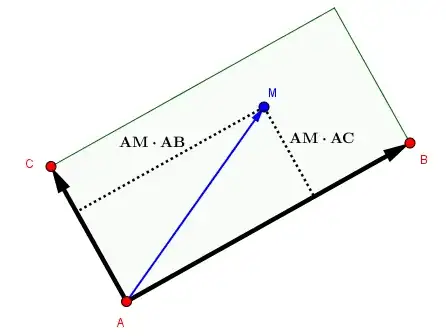There is a point $(x,y)$, and a rectangle $a(x_1,y_1),b(x_2,y_2),c(x_3,y_3),d(x_4,y_4)$, how can one check if the point inside the rectangle?
$M$ of coordinates $(x,y)$ is inside the rectangle iff
$$(0<\textbf{AM}\cdot \textbf{AB}<\textbf{AB}\cdot \textbf{AB}) \land (0<\textbf{AM}\cdot \textbf{AD}<\textbf{AD}\cdot \textbf{AD})$$ (scalar product of vectors)
I found this formula but I don't understand how I have to calculate it. I haven't done much math in a long time.
I don't understand why this is considered a duplicate when I'm asking how to solve the equation provided by the answer of that question.
